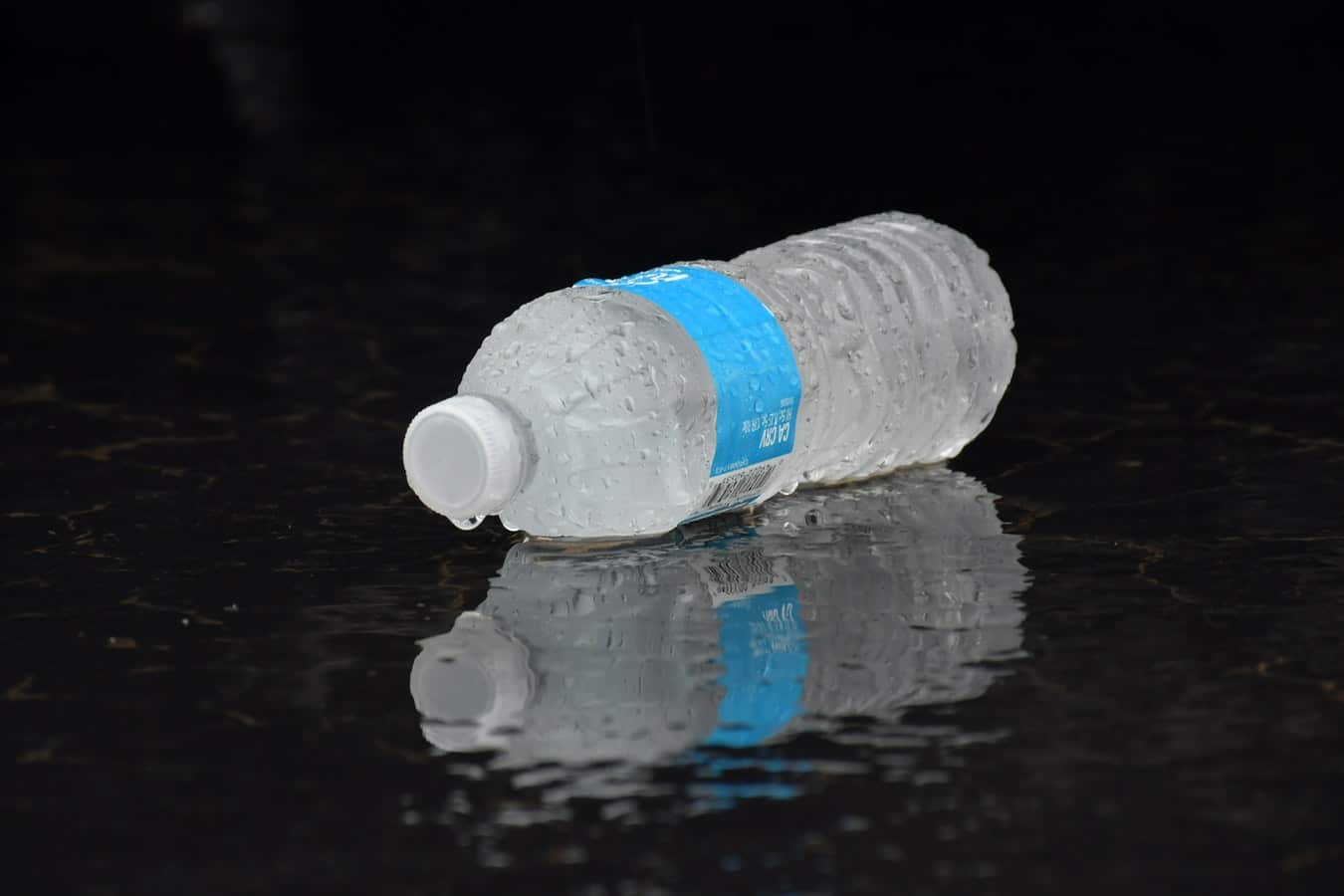
Can you freeze water bottles, plastic, metal, or even glass? Absolutely, but not all of them handle the cold the same way. Some will chill perfectly, others can crack, warp, or even burst.
I’ve frozen just about every kind of bottle over the years, sometimes out of curiosity, sometimes by mistake, and learned which ones survive and which ones don’t.
In this guide, I’ll walk you through what really happens when you freeze water bottles, how to do it safely, and what to avoid depending on the material.
Whether it’s plastic from the store or your favorite stainless steel tumbler, here’s how to keep it cold without a mess.
Which Water Bottles Can You Actually Freeze?
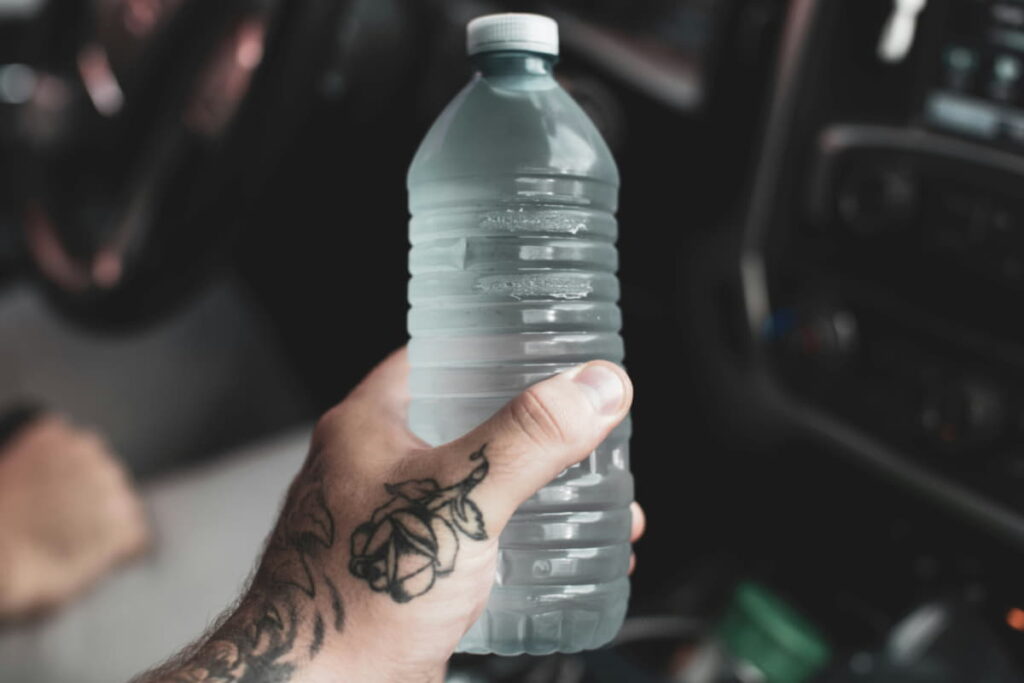
Here’s where things get interesting, because while almost any bottle can survive a few hours in the freezer, not all are designed for it. The material makes all the difference. As water freezes, it expands, and that tiny bit of pressure can either be harmless or catastrophic, depending on what your bottle’s made of.
Here’s the quick breakdown:
| Bottle Type | Can You Freeze It? | What to Expect |
| Plastic (disposable or reusable) | ✅ Yes | Best option. Leave space at the top so it doesn’t burst. |
| Stainless steel or insulated | 🚫 No | The insulation keeps the water from freezing and can damage seals. |
| Glass (including most bottles) | ⚠️ Not recommended | Cracks easily unless it’s freezer-safe tempered glass, like straight-sided mason jars. |
If you just want icy water without a mess, plastic is your safest bet. Stainless steel works better for keeping things cold, not freezing them, and glass is best left for the fridge, not the freezer.
Why Bottles Burst (and What’s Actually Happening in the Freezer)
So why do some bottles handle the freezer just fine while others crack, warp, or even explode? It all comes down to one surprising fact about water, it doesn’t behave like most other substances when it gets cold.
According to Sicencing.com, most materials contract (or shrink) as they cool. Water does that too, but only until it reaches about 39°F. Below that, it starts to expand instead of shrink. And once it freezes completely, it expands by roughly 9% in volume.
That small expansion can create a lot of pressure inside a sealed container. If the bottle isn’t designed to flex or release that pressure, something has to give, and that something is usually the container itself.
Here’s what that looks like depending on the type of bottle you’re freezing:
- Plastic bottles: Flexible enough to stretch as ice expands, especially if you leave an inch or two of space at the top. These are your safest bet for freezing.
- Stainless steel bottles: Rigid and insulated, which means the cold doesn’t reach the water evenly. The expanding ice can warp the metal, crack the inner lining, or ruin the vacuum seal.
- Glass bottles: The most fragile option. Even thick glass can crack or shatter when the ice expands. Only specially made tempered glass, like some straight-sided mason jars, can handle it safely.
So the next time you toss a bottle in the freezer, remember: water doesn’t just freeze, it grows.
And if your container can’t handle that expansion, you’ll be dealing with a leak (or a loud crack) instead of a refreshing cold drink.
How to Freeze Plastic Water Bottles (The Right Way)
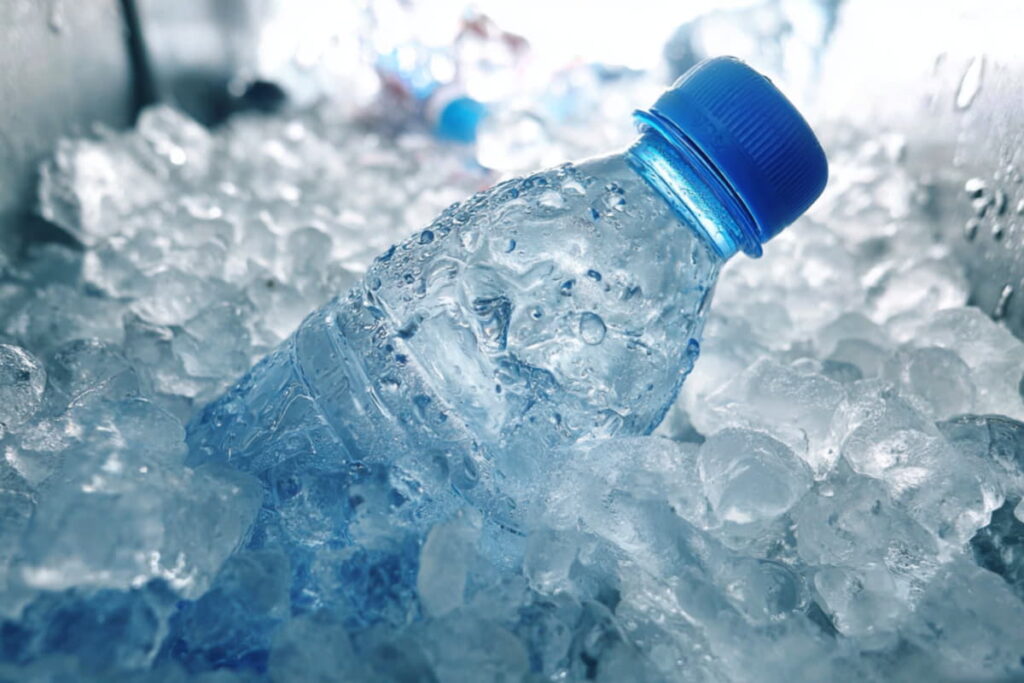
Plastic bottles are the freezer’s friend, flexible, forgiving, and cheap to replace. Still, there’s a right way to do it if you want to avoid leaks and bursts.
I freeze plastic water bottles generally with no problems. However, there has been a time or two that a couple have burst open when freezing. The same can be said when freezing soda.
The reason was due to them being filled all the way to the top.
Here’s my foolproof method for freezing plastic water bottles:
✅ Step 1: Leave Headspace
Water expands as it freezes, so never fill your bottle all the way to the top. Leave about 1 inch of air space under the cap. That little gap absorbs the expansion pressure.
✅ Step 2: Keep Bottles Upright
Freezing bottles upright helps the ice expand upward instead of sideways, which is what causes most splits.
✅ Step 3: Don’t Rush It
It takes time for the center of the bottle to freeze. Rushing the process (like sticking bottles right next to the freezer vent) can cause uneven freezing and stress cracks.
This generally is not a problem when freezing plastic water bottles.
The chance of them exploding is low (but it still can happen), as there is enough elasticity in the plastic water bottle to accommodate the in the increase in volume as the water expands.
How Long Does it Take to Freeze a Plastic Water Bottle?
| Bottle Size | Average Freeze Time | Notes |
| 8 oz | 30–45 minutes | Great for lunch boxes |
| 16 oz | 1–1.5 hours | Perfect for workouts |
| 1 liter | 2–3 hours | Ideal for cooler packs |
| 2 liter | 4–5 hours | Leave lots of headspace! |
Freezing Reusable Plastic Bottles
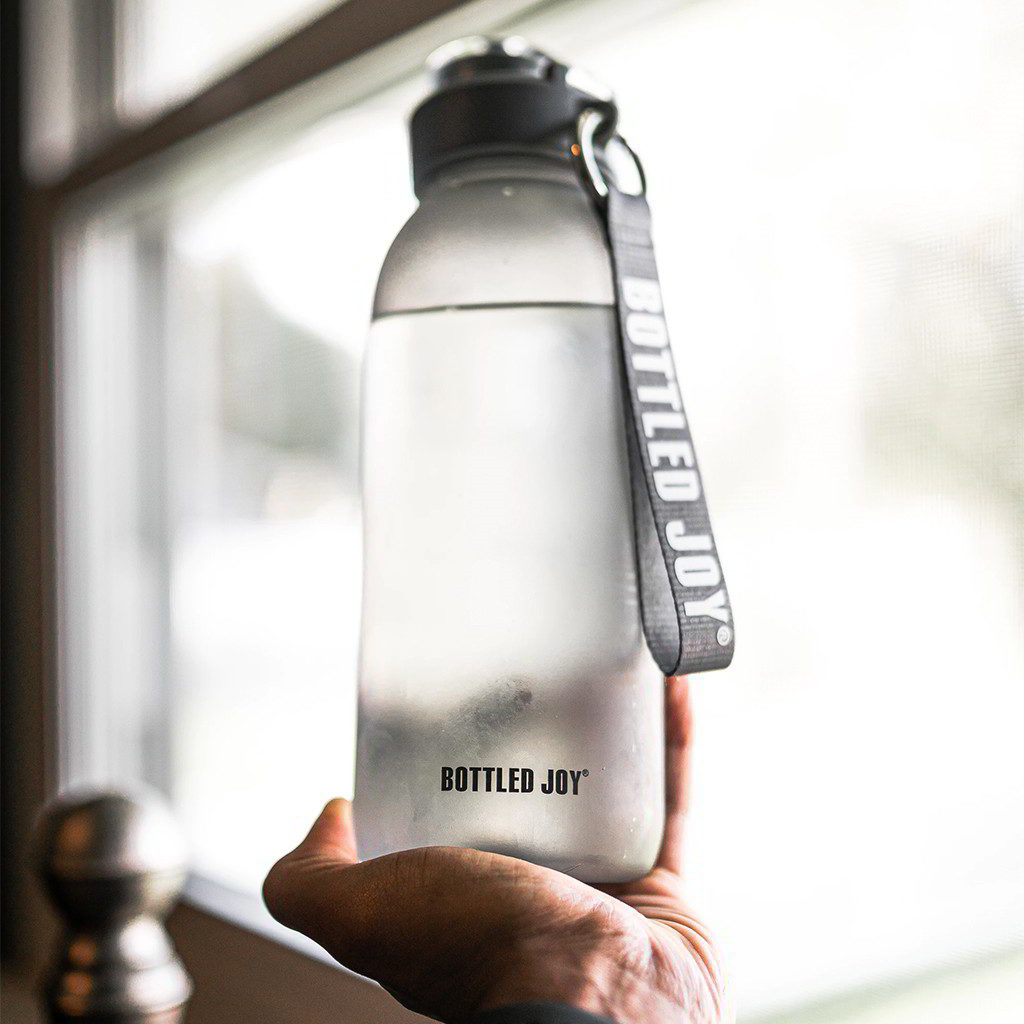
Not all plastics are created equal.
Reusable bottles are often made from thicker, more rigid materials like Tritan, HDPE, or polypropylene, and these don’t flex as easily as disposable bottles.
That means freezing them might work fine… or might leave you with a warped lid and a bottle that never closes right again.
Here’s what I’ve learned:
- Always check the manufacturer’s site
- Look for the snowflake symbol on the bottom, that means it’s freezer-safe.
- Avoid freezing insulated or double-wall bottles, they trap moisture and crack.
Freezing Stainless Steel Bottles: Just Don’t
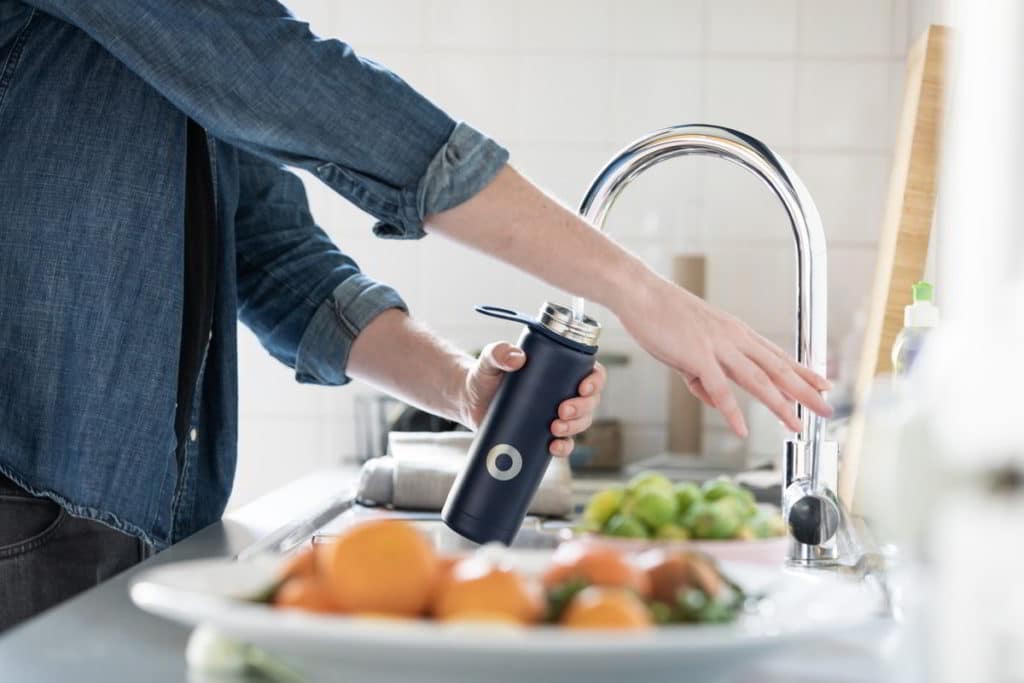
Here’s where I learned one of my hardest lessons (and ruined a perfectly good bottle).
I once froze my insulated stainless steel bottle overnight, thinking it would be “super cold” for the next day’s hike. What actually happened? The vacuum insulation seal popped, and suddenly, my $40 bottle was just a shiny thermos that couldn’t keep anything cold.
Freezing can rupture the inner lining or break the vacuum insulation, which permanently damages the bottle. It might also deform the metal if the pressure gets high enough.
Some manufacturers have created bottles that can be frozen, this is why it is a good idea to check the instructions or the manufacturers website to see if you can or can’t place their stainless steel water bottles in the freezer.
So, the rule of thumb: Chill stainless steel bottles in the fridge, not the freezer.
What Happens When You Freeze Stainless Steel Water Bottles?
As we explained earlier, when water freezes, it expands.
While plastic water bottles have the elasticity to expand and accommodate the increase in volume of frozen water, stainless steel bottles, for the most part, do not.
The expanding liquid could cause the seals or welds that hold the water bottle to break or burst. Leaving it deformed or unusable.
Damage could also be done to the stainless steel bottle’s vacuum seal. This would cause the bottle to lose its insulating properties, meaning it would be unable to keep the water cold.
Freezing Water in Glass Bottles (Don’t Do It)

Glass is tricky. It doesn’t flex, it cracks, and when it breaks, it’s a safety nightmare.
Even “thick” glass bottles can’t handle the expansion of ice unless they’re made with tempered glass, the kind you find in some freezer-safe containers or mason jars made for freezing. But here’s the catch: not all mason jars are safe. Only the straight-sided ones (like wide-mouth Ball jars) are designed to handle freezing temperatures without cracking.
So while those look similar to glass bottles, they’re not the same thing. Regular beverage bottles, like juice or sparkling water bottles, don’t have that same stress-resistant design, and when water expands inside, they’re almost guaranteed to break.
If you really want to freeze in glass, stick with jars that specifically say “freezer-safe” on the label, leave an inch of space at the top, and cool the liquid completely first. Otherwise, it’s just not worth the cleanup.
How to Freeze Bottles Faster (Fun Science Trick)
Freezing water instantly is a neat little trick that can be used if you want to impress people or you are looking for a nice ice breaker (no pun intended) at a party. 🤪
If you’ve ever seen those “instant freezing” videos online, it’s called supercooling. Here’s the gist:
- Chill purified water just below 32°F (0°C) without letting it turn to ice.
- When you tap or shake it, it freezes instantly.
These two videos do a pretty good job of showing the 2 methods that can be used to freeze water instantly.
If you are looking for a quicker method to show off and impress your friends, you can take a look at this process by Sick Science.
So, Is It Worth Freezing Water Bottles?
Absolutely, if you use the right kind.
Plastic bottles freeze beautifully and can save you from wasting money on ice packs. Just give the water some breathing room and avoid anything made of metal or glass.
Freezing bottles taught me way more than I expected, patience, curiosity, and the importance of not filling things to the brim. It’s a simple trick that’s surprisingly useful once you know the rules.
If you’re curious about freezing more than just water, check out my complete guide to freezing foods the right way.